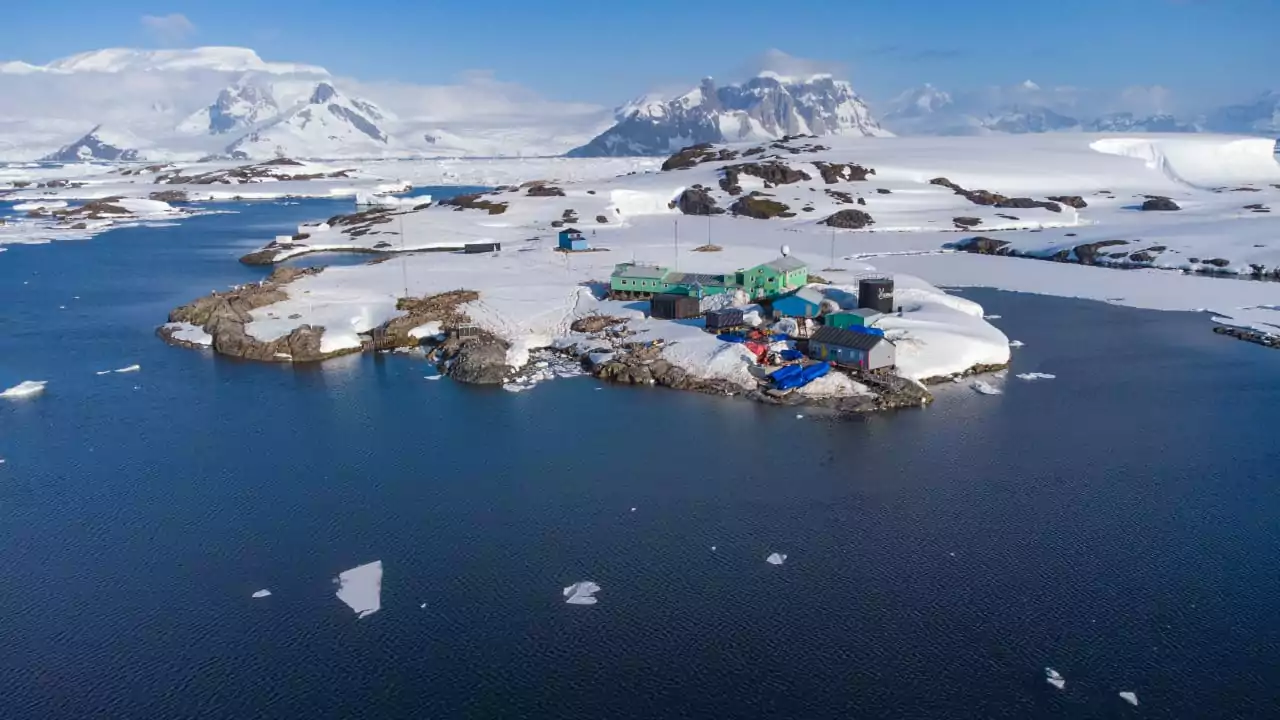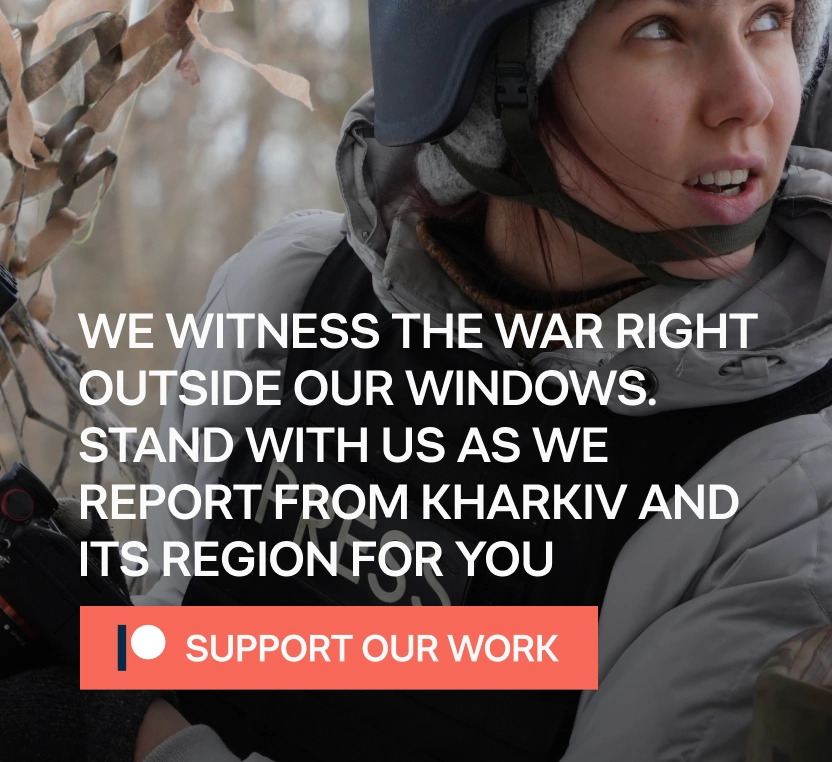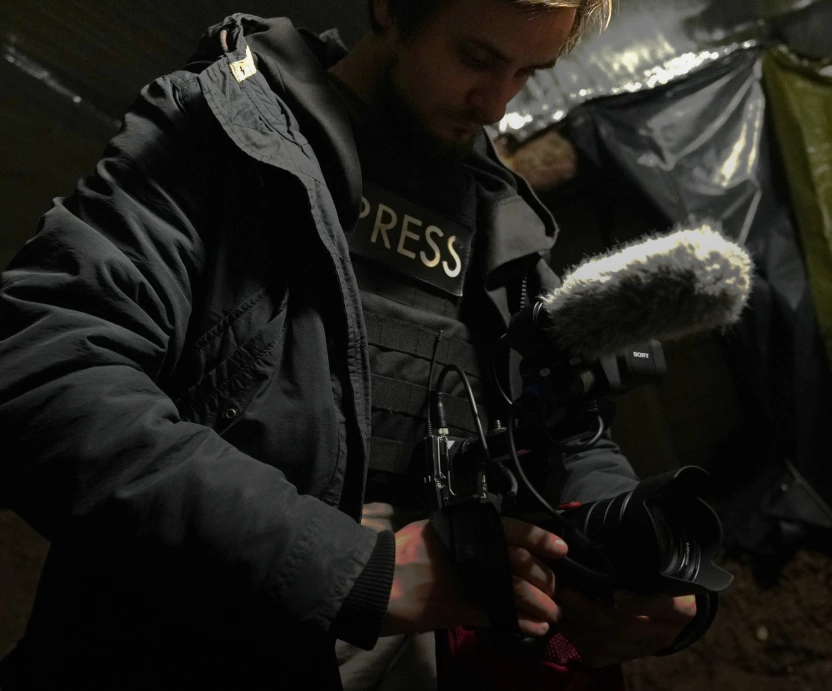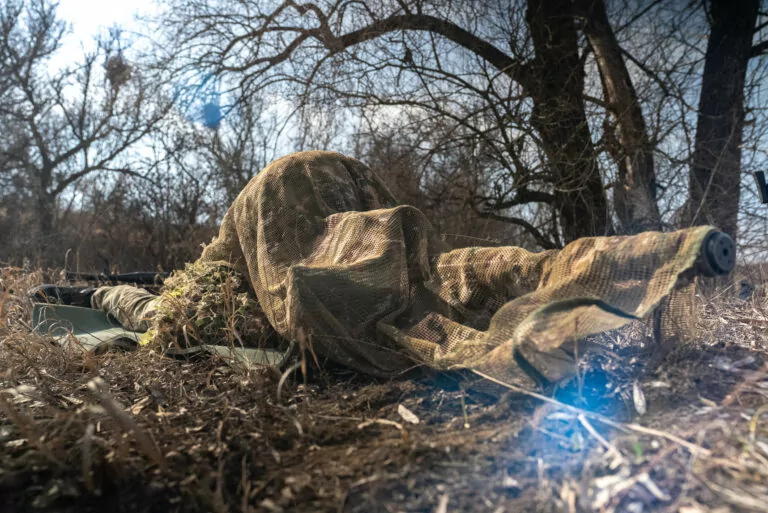Ukrainian Vernadsky Research Base is located on Galindez Island, 100 kilometers from the polar circle. It’s separated from the Antarctic peninsula by the Penola strait and a distance of 10 kilometers.
We didn’t have our own Antarctic research station, so in 1993, Britain offered to transfer their Faraday Station to them. Ukrainian diplomats loved this idea. Although other countries wanted the station, we already have had a scientific basis for Antarctic studies. On February 6, 1996, the transfer happened.
According to the agreement, the transfer was free if Ukrainians continued the research started by the British scientists and contributed the new data to the international database. But during the transfer ceremony on February 6, the head of the British expedition said it’s a bad omen to gift a good thing or give it away for free. Then, one of the Ukrainians took a pound from his pocket and gave it to the scientists. Formally, the Faraday station was bought for the symbolic pound.
Our journalist Daria Lobanok spoke to the station researchers in January and February to publish her piece just before the anniversary. This is the translation of her article — you can read the original here.
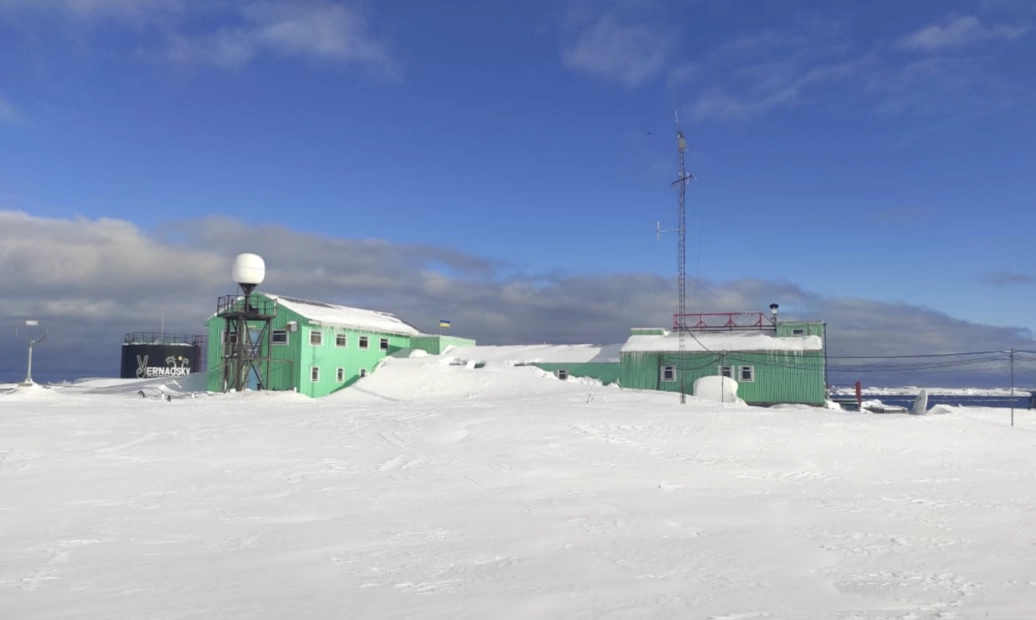
“It’s important for Ukrainians to participate in Antarctic research. It’s a significant contribution to the future, an opportunity to participate in global research on the level with other countries, and, of course, the economy,” explains the scientist Anna Soina.
Thanks to Ukraine’s participation in Antarctic research and its Research Base in the South Pole, the Ukrainian fishing fleet can work in the Southern Ocean. They have quotas on fishing, e.g., krill fishing. For instance, when you see canned krill in the shops of Ukraine — like “Antarctic krill” — it’s probably a result of the work of a Ukrainian ship called More Sodruzhestva.
Through our station, the world meets Ukraine. And now, thanks to our polar scientists, more people will find out about the Russian full-scale invasion of Ukraine.
“When I arrived at the station for the first time, I felt like I came home a feeling of coming home,” says Anna Soina
Anna Soina is a junior research fellow at the Institute of Radio Astronomy of the National Academy of Sciences of Ukraine. She is a participant of the 25th Ukrainian Antarctic expedition.
Kharkiv residents from this expedition remained at the station for a year. The team’s way to Antarctica began at the beginning of COVID-19 and lasted a month.
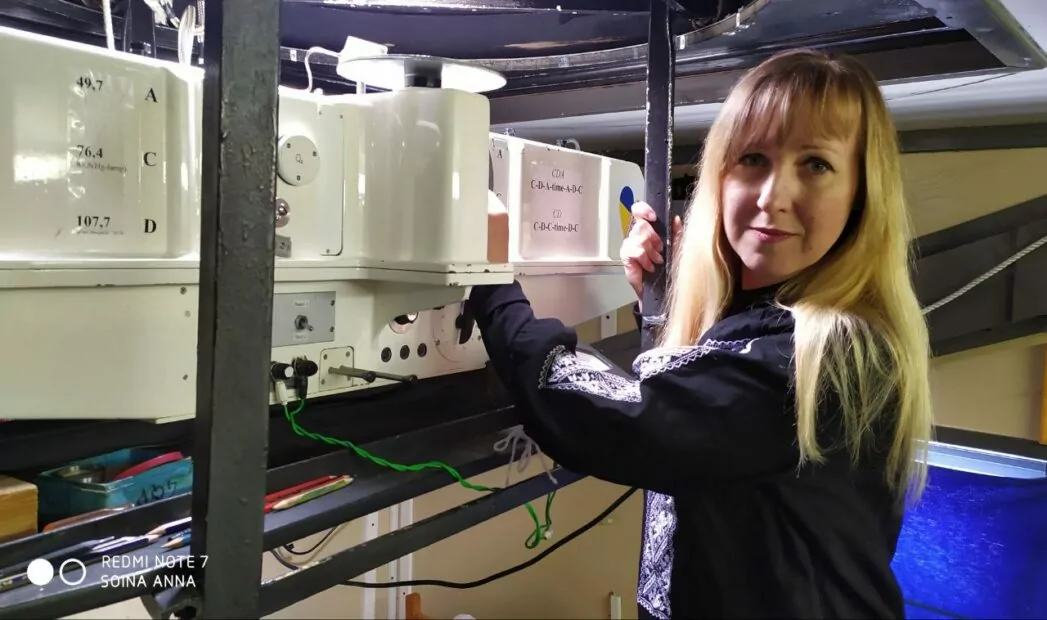
“Until the last moment, there was a danger of not going to the station because of the COVID. Most times on the road, we had to self-isolate on the quarantine. But we had a lot of adventures, and the team got really close. I also liked the weather in the Drake Passage. When we went away to spend the winter on the Base, Drake was soft and sweet, and the ship almost wasn’t rocking. So, I first experienced sea sickness only when we returned from wintering.”
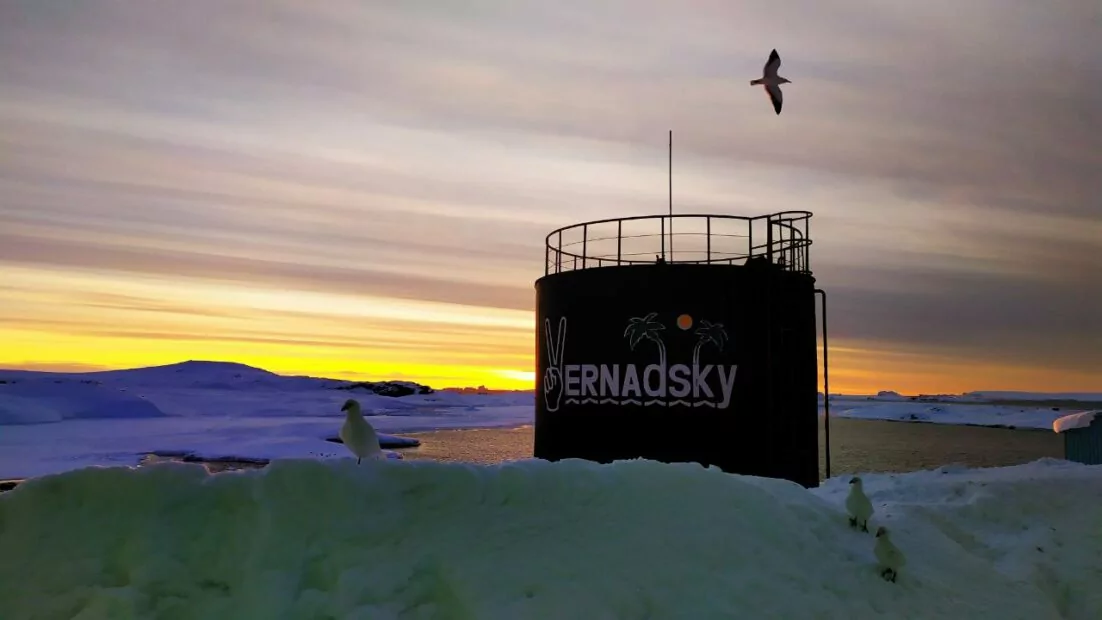
Since she was a student, Anna talked and worked for famous scientists — Yurii Yampolskyi, Hennadiy Milinevskyi, Andrii Zalizovskyi, and others connected to the station and polar research. Inspired by the stories about Antarctica, she wanted to go there, but for a long time, the women weren’t allowed to participate in the expeditions, so “the dream of getting on the station Academic Vernadskyi was hopeless.”
“I listened to the stories about the station, was inspired by all things polar, and, in the beginning, was asking to join the expedition as a joke. With the change of leadership in the Antarctic Center, women were finally allowed to work at the station, and I decided to try it.”
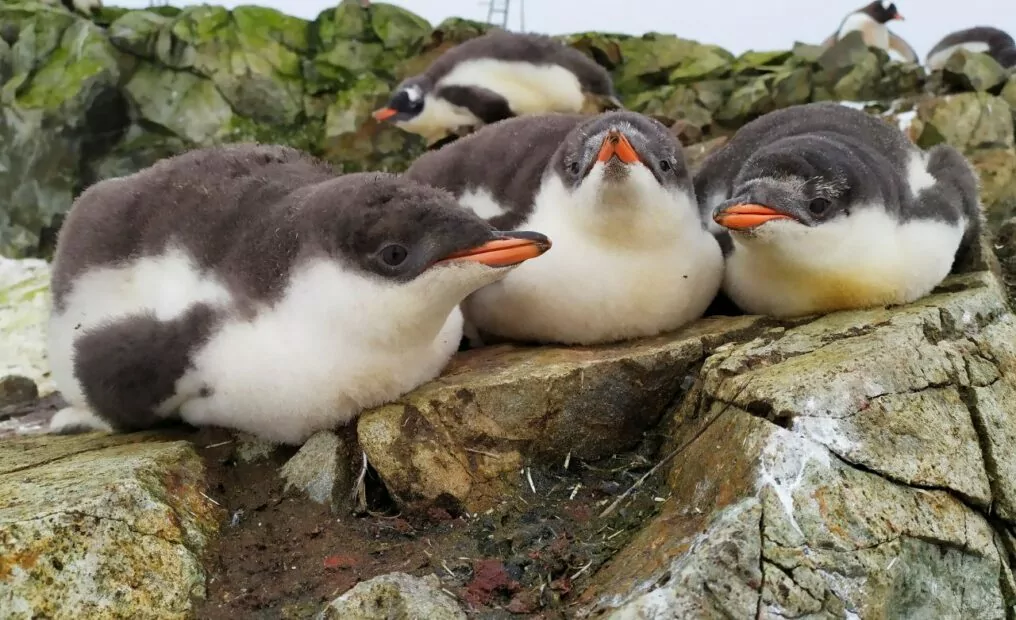
As such, Anna joined the 25th team and went to the wintering as an ozone scientist and geophysicist.
An ozone scientist’s job is to measure the ozone levels in the atmosphere. On the Research Base, the measurements are conducted via the Dobson spectrometer, a device the winterers call “Virginia.” The measurements are made using methodologies that depend on cloud cover, time of the day, season, and the sun’s altitude above the horizon. Anna explains that when the sky is cloudy, and you cannot see the sun, scientists can do only five standard measurements, but when the sky is clear (and even during moderate cloud cover), they can do up to 60 measurements.
“[When the weather is good] ozone scientists “live” in the attic, which the residents of the Research Base call “an ozone office.” These measurements are important because “Vernadsky” has one of the [largest databases with ozone measurements]. We must add to them to track the ozone layer dynamics. These studies have been conducted at the station since 1957. The Antarctic ozone hole was discovered here.”
Anna explains that this research is also essential for satellites because they are calibrated according to the Earth’s data.

But the complications also exist, says Anna. In particular, measuring the ozone layer by the Moon is possible only when the sky is clear during the Antarctic winter. “We had the necessary conditions for two nights, and my colleague and I tried to do these measurements, but, due to unforeseen circumstances, that resulted in nothing. It was very upsetting.”
Scientists use the Umkehr method to collect measurements of the ozone layer: they do it before sunrise, just after sunrise, and during sundown.
“This method demands a clear sky. It’s very upsetting when you wake up an hour before sunrise, [start] rigorously collecting measurements, and then, in the middle of the process, the cloud takes over the sky. Sometimes I even want to cry; it’s upsetting. But you cannot argue with nature,” Anna laughs.
The measurement of ozone in the atmosphere is important because ozone layers protect all things alive from the ultraviolet radiation that’s harmful to them.
Anna spent a year at the station. Wintering takes exactly this much time, but seasonal projects that last from several days to several months also exist. They are very intense and always conducted during the Antarctic summer.
Apart from their primary jobs, polar scientists work day and night shifts around the station: clean up the snow, etc. Anna shares that when she had time to spare, she loved baking and making sweets.
“I sewed pillow animals for the boys’ birthdays, read books, played pool with friends, played darts, played on consoles, walked or skied around ours and our neighboring island. I also went out on a boat to the nearby waters, though not very often.”
Are there things you found difficult to get used to in Antarctica?
“I thought I’d miss many things, perfumes, make-up, etc. But the station had enough of everything, and when new people came with a new season, I got my favorite perfume [sent to me]. That made me really happy.”
After the expedition, Anna drinks instant coffee only. Because of the quarantine, she explains, the usual coffee couldn’t have been delivered to the station, so they drank what coffee they had. Now, this habit remains with her.
Interesting fact: Is there a “penguin turner job”?
It was described by Yevhen Krashtan, a system administration for the 12th expedition, in the book Notes of a Penguin Turner [“Записки перевертача пінгвінів” in Ukrainian — ed.]. After publishing a book, Yevhenii jokingly told journalists about this profession — they took it seriously and started spreading the story, too. This profession doesn’t exist.
Anna explains, “If you’d seen how penguins run, how quick and active they are, you would understand how stupid this myth is. Penguins are birds capable of caring for themselves, both in the water and on the land, and they don’t need help. Additionally, touching animals in Antarctica is forbidden. Only biologists are allowed to approach them — and only when it’s a part of their technical assignment. Plus, it’s dangerous. Penguins have a very tough beak.”.
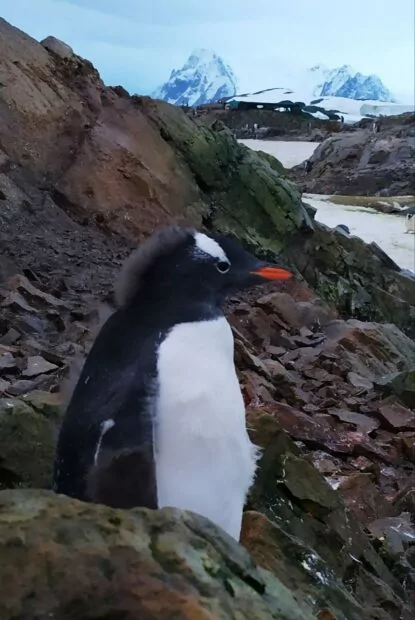
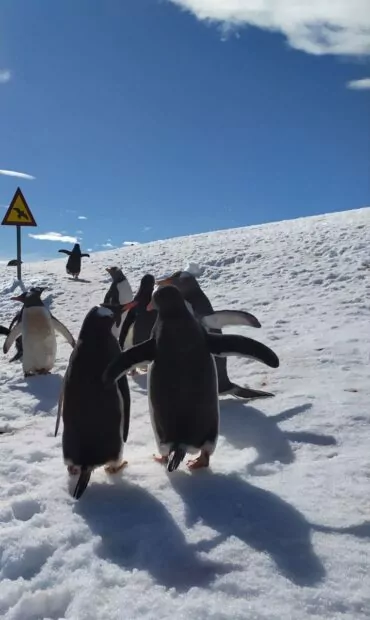
From Antarctica to the Armed Forces: Yurii Lyshenko’s story
Yurii Lyshenko is from Merefa, Kharkiv Oblast. He’s an engineer for the Antarctic scientific center.
First, he got into Antarctica in 2011. Afterward, he was there for three winterings. Yurii returned from the last expedition on May 5, 2023.
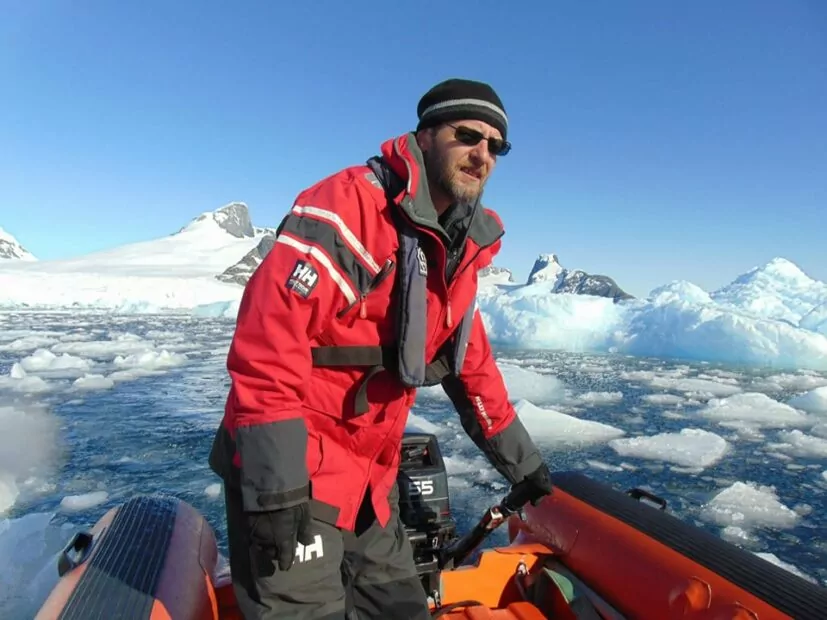
“I am actually a navigator-mechanic. For some time, I worked in the Arctic, so I was real interested in comparing it with Antarctica,” Yurii says. “It occurred that it’s an entirely different world. They might seem similar: same cold, snow, ice, but everything’s very different.”
In particular, flora and fauna. At least some plants grow in the Arctic, but in Antarctica, it’s only moss and lichens. White bears, seals, arctic foxes, and birds used to cold and ice live in Artica, whereas Antarctica has unique sea life — penguins, seals, whales, and sea birds that can survive in the extreme environment.

On the Vernadsky Research Base, Yurii had to maintain generators that supply the entire station with power and go out on work trips to islands and the continent. “As a person with experience of work on the sea, I had to go out on our Zodiac boats, but my main responsibilities were diesel control and maintaining generator stations.”
During Yurii’s first expedition, the station used old devices installed on Faraday by the British in 1980. They were replaced only a year ago, says Yurii [in 2023; the conversation happened in 2024 — ed.], so the generator station has been functional for 41 years.
What was most memorable about the expedition?
“For every “winterer,” the most important moment is the first and last day in Antarctica. Although I first stepped on the continent long ago, I remember my first impressions from what I saw. The last day is always anxious because you never know if you will return there again.”
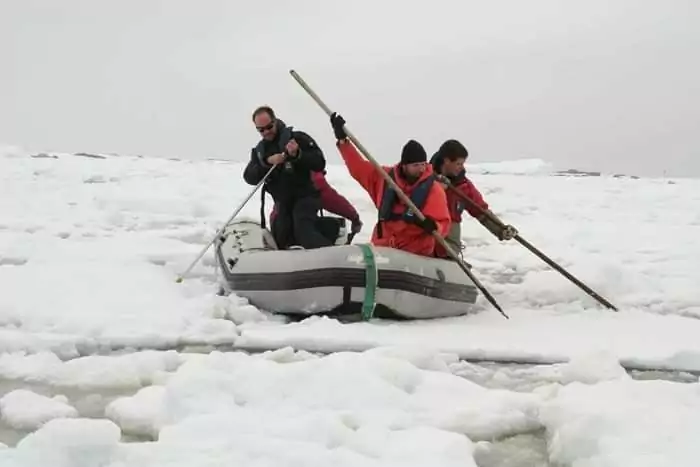
How polar explorers have fun
Even though the station’s scientists sometimes work overtime, the most pleasant thing, according to Yurii, is that you can plan your day on your own. “In their spare time, people focus on sports. We have a gym. If the weather allows, you can snowboard, ski, etc. Every kind of winter sport is available here.”
Celebrating all holidays and birthdays together on the station is a tradition. The main holiday for explorers is Midwinter [when there’s summer solstice in Ukraine — ed.]
“All [newcomers] traditionally swim in the Southern Ocean during Midwinter. It’s a baptism by fire for them — after that, they become true polar scientists,” Yurii says.
On this day, the station also runs competitions for people who do different sports, and then the teams gather to hang out eating snacks and sweets.

Preparations for the expedition
After selecting candidates for the expedition, the Antarctic Center organizes a gathering for them that lasts about ten days. They run classes for participants, organize therapy sessions. After that, the selection commission determines who’s going to join the expedition.
Right now, gatherings are organized in Kyiv, but in the past, the preparation training was held in the Martove village of the Kharkiv region, where an observatory for the Kharkiv Institute of Radio Astronomy of the National Academy of Sciences is located. But the Russian army occupied the village [it was deoccupied by the Ukrainian forces in the Kharkiv counteroffensive in the autumn of 2022 — ed.], so the observatory is now in need of renovation. Moreover, it’s currently too dangerous to organize training events there.
The Antarctic Center provides polar scientists with everything necessary.
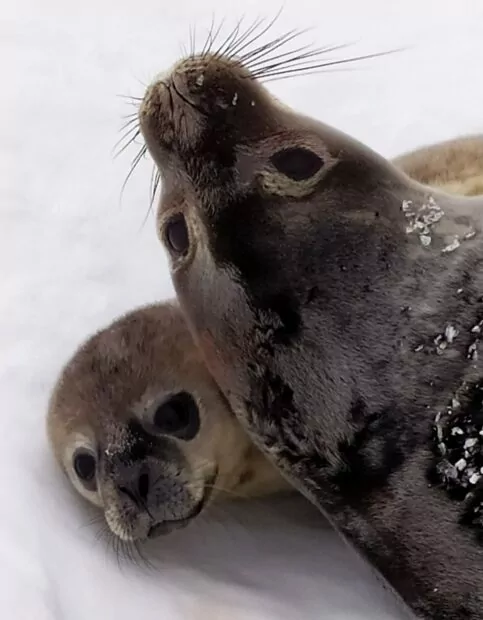
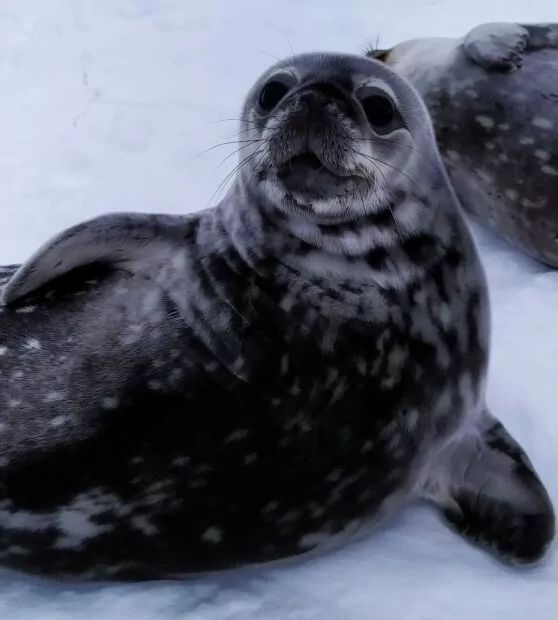
How did life on the station change after the full-scale invasion?
“We met the beginning of the Russian full-scale invasion in the Chile hotel, in a quarantine before the road to the South Pole. From the first days, people on the station started to organize and collect donations for Ukrainian defenders.”
Yurii noted that they had a lot of veterans among expedition participants, and the boys at the station started hitching rides on yachts that were passing by and went back to Ukraine to join the Armed Forces.
“We were able to return only after 15 months. In Ukraine, I immediately joined the army, becoming a soldier of the 54th separate mechanized brigade. Currently, I’m undergoing rehabilitation.”
The engineer said he would want to return to Antarctica for another season. He says he probably won’t be able to rejoin the army because of his health, so he plans to return to the station.
Interesting fact. Antarctica doesn’t have a defined timezone
Very few people live on the continent, so the time zones aren’t established. Most research bases here live according to the timezone of the country closest to them. For instance, the Ukrainian Vernadsky Research Base is just across from Chile, so the time difference between Ukraine and the station is five hours, as is between Ukraine and Chile.
“Research base is like a small town that should be cared for”: Bohdan Havryliuk’s experience
Bohdan Havryliuk is a geophysicist and the head of the 28th Ukrainian Antarctic Expedition, which was his tenth expedition to Antarctica. His first journey to the Research Base was 2002: he was a part of the seventh expedition.
Bohdan is from Kharkiv and works in the Institute of Radio Astronomy, though he has not been home for the last three years.
“Because of the full-scale invasion, the Institute doesn’t operate at a full capacity because people [from the Institute] are living in different parts of the planet. I, for one, am at Vernadsky station.”
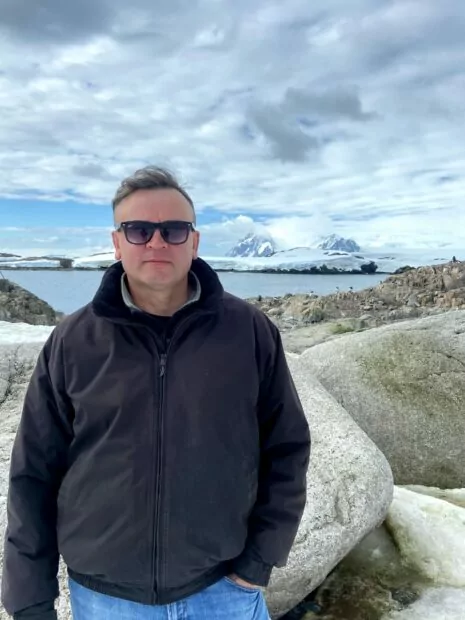
Before 2002, Bohdan worked at a Malyshev tank factory. In the Soviet Union, tiahachi were manufactured there. Those were tractors for Soviet Antarctic expeditions. They were called Kharkivianky [in translation from Ukrainian, that would sound like “Kharkiv female resident” — ed.] They aren’t manufactured anymore.
First impression
“When you first get to the station, your life changes completely. It’s an opportunity to test yourself, [see] whether you’ll make it. Plus, it’s a unique chance to learn new things, see the incredible nature of Antarctica, touch what humanity hasn’t seen. That was what I felt for the first time, and that’s what I feel now.”
Bohdan says that, during the last 20 years, the station has progressed significantly. New technologies and tools appeared there, simplifying the polar scientists’ job. If, in the past, researchers had to do a lot of things manually. These tasks are automated now, which saves time. Equipment and meals have also changed.
“I think we have the best expedition fleet of all time among Ukrainian expeditions. We have an amazing vehicle park for going out on the water, several powerful Zodiac boats.”
Three years ago, researchers got the first satellite antenna, so now they have unlimited Internet connection and even Starlink.
“But the main thing is that the approach to measuring meteorology and geophysical parameters is changing. We procure different tools to produce very accurate, world-level research.”
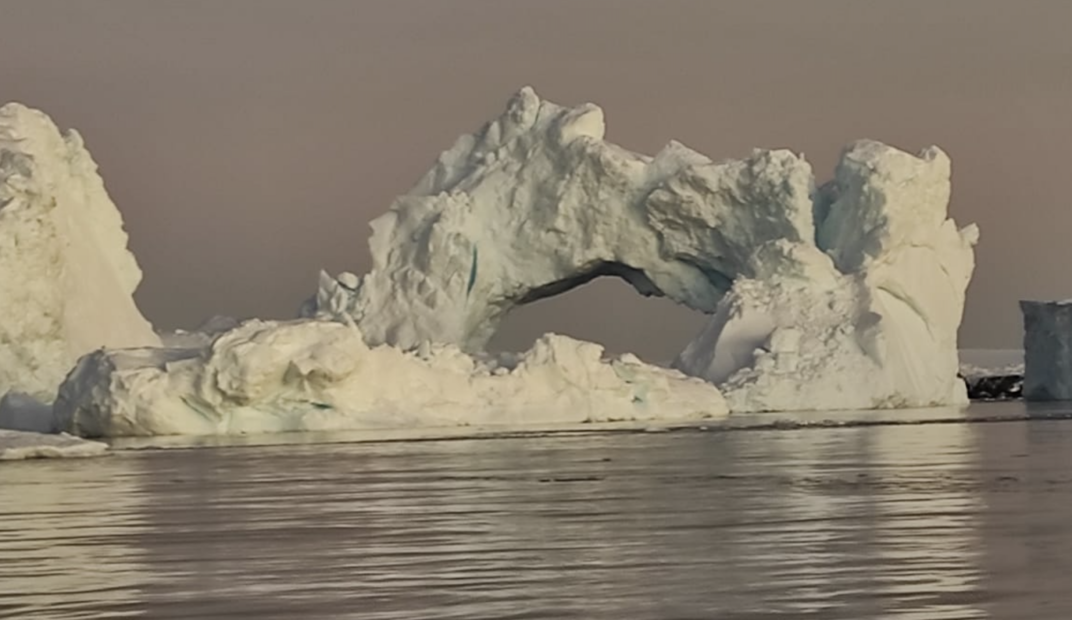
At the station, Bohdan is responsible for geospace research — in other words, studying the interaction between Earth and space.
For the research of the Earth’s electromagnetic field, the scientists are using six different complexes, which allow them to explore different heights and frequencies. Their main focus is dedicated to monitoring the ionosphere. The research helps to prognose geological events like earthquakes and volcanic eruptions. It can also be applied to navigation, space, and electromagnetic field study. The important advantage of conducting research in Antarctica is that it doesn’t have human-made pollution of the environment.
What polar scientists do in their spare time
“For me, the best rest is the change of activity. To just jump into a boat and take off somewhere, see what’s happening there. Antarctica is unique: icebergs, picturesque nature. You can hike on skis on the island.”
Before the Russian full-scale invasion, Bohdan loved to travel around the Antarctic in his spare time, but right now, he worries often about the war. “I always try to do what’s useful for both the station and myself. So it’d be difficult to say I have a lot of free time.”

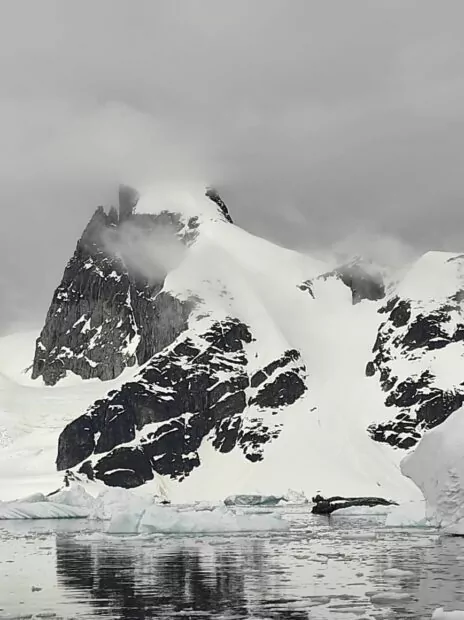
Do you have new habits after being on the station?
“The last 20 years of my life are connected to Antarctica. Sometimes, when I return home, I do what I do at the station: work on projects connected to this continent, even in Ukraine. I’d say it’s my lifestyle.”
Scientific achievements
The National Antarctic Scientific Center of Ukraine is managed by the State Special-Purpose Research Program in Antarctica, that is approved by the Cabinet of Ministers. Its main directions are geophysics, meteorology, and biology.
“Our Kharkiv Institute for Radio Astronomy and other institutions in Ukraine try to contribute something new to move our science forward, to get it to an international level, so [the people] would be proud of it.”
Also, Ukrainian scientists from the Vernadsky Research Base have collaborated with representatives of other countries, in particular, with scientists from the US and the UK.
“In general, all science is based on an extraordinarily huge database that was collected in the past and is currently being collected. We transfer these data [data from the Verndasky station’s research — ed.] to our institutes, where [others] continue to work with them.”
Also, scientists monitor changes in nature: count how many birds and mammals appear and where, and analyze climate changes.
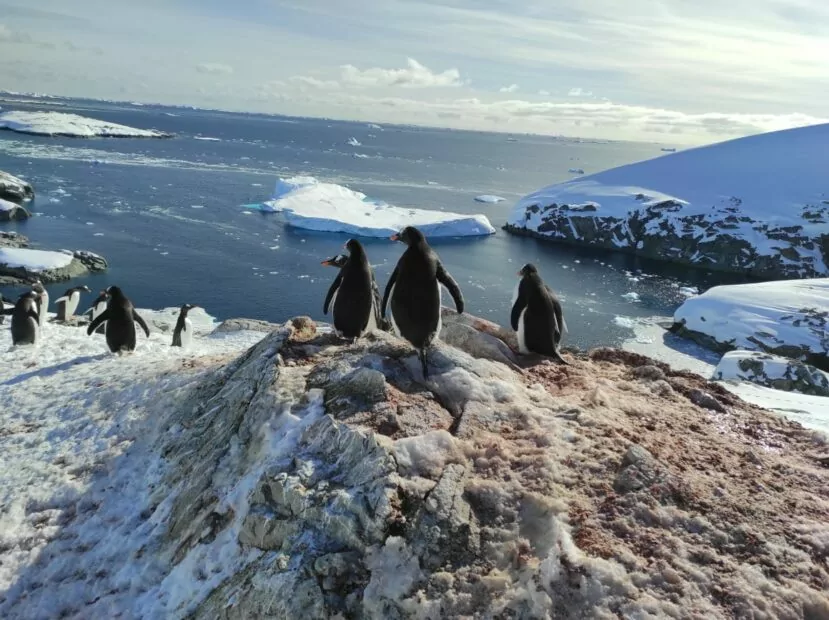
What challenges do you face at work?
The station is a small town that needs care, especially its infrastructure. Everything needs to work properly. Things break in bad weather sometimes, but the expedition’s members repair them.
Sometimes, it’s dangerous to go out into the ocean. When the ice is around, waves and the weather can change rapidly, and snowstorms happen. But polar researchers are prepared for that, too. They consciously come to work here.
“But if you were to compare life at the station to life in Ukraine, where there’s war, what’s the point of saying living in Antarctica is hard? After returning from the previous expedition, I spent 11 months serving in the Ukrainian Border Guard Service. These are different things entirely: being in the trenches and on the station. So I don’t even want to say whether it’s difficult or not here. We’re here, far away from the war and bullets.”
Since the beginning of the Russian full-scale invasion, leaving Ukraine has gotten more complicated, but the management of the National Antarctic Center helps scientists reach Verdansky Base. After the end of this expedition, though, Bohdan plans to return to the Armed Forces.
At the end of our conversation, Bohdan showed me the landscape surrounding his office. He walked out in sunglasses to protect his eyes from the light reflected by the snow. The penguins were hanging out mere steps away from the building. Snow-capped mountains stood on the horizon.
Curious facts. Noosfera research ship
The Vernadsky station has its own ship for research and supply, Noosfera. It’s a former James Clark Ross, which Ukraine bought from Britain. The ship left Odesa port last on January 28, 2022. The preparation for the Antarctic journey took four months. The Director of the National Antarctic Scientific Center, Yevhen Dykyi, recalls that the threat of full-scale war was already present, so preparations needed to be quick. Since then, the ship hasn’t returned to Ukraine. Noosfera spends the intervals between Antarctic seasons in Cape Town.
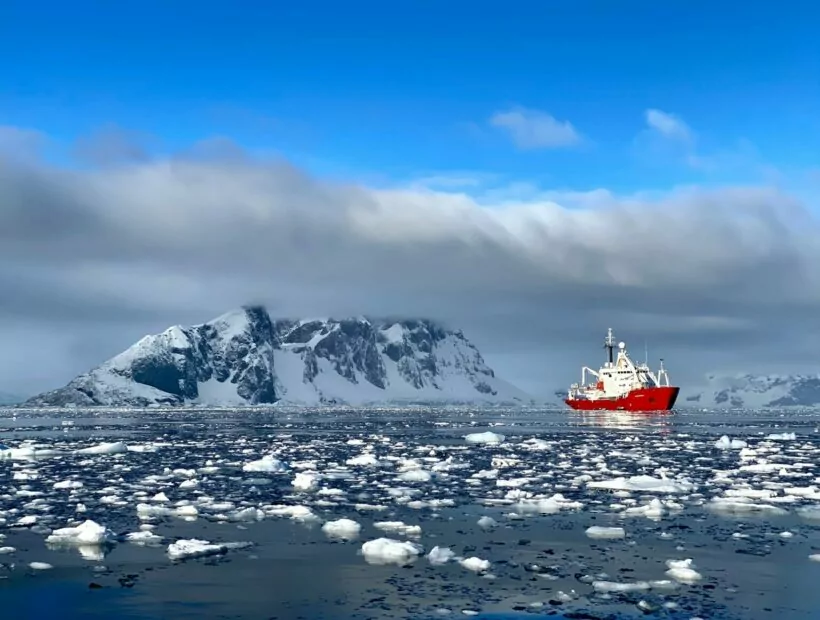
Author: Daria Lobanok
Read also
- “Kharkiv in April was a tough territory.” Oksana Dmitrieva about Kharkiv Puppet Theater surviving the year of war
